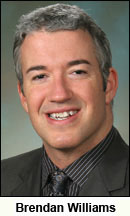OPINION
All-cuts austerity has failed; Washington needs revenue
In an April 26 column in The Seattle Times, a state budget leader crowed that the bipartisan, Senate-driven budget would “move state government and its budgeting process toward sustainability — not just for the next two years, but for years to come.”
Frothy post-session rhetoric from both parties was similar. Yet “sustainability” lasted all of 76 days, from July 1 to a Sept. 15 revenue forecast showing the all-cuts two-year budget more than $1.25 billion in the red.
A second 2011 special session dawns Nov. 28, and responsibility demands it address state finances with what should have been in the mix last time: More revenue. We cannot cut our way to prosperity.
Nationally, government layoffs, including more than 7% of our state’s work force, have stalled the economy. Poignantly, this even impairs our ability to get the unemployed back on their feet. This month the state’s Employment Security Department eliminates another 390 jobs.
Remaining state workers pay a three times higher share of health care premiums than counterparts in neighboring Oregon, and, again, received pay cuts instead of Oregon’s cost-of-living pay increases.
New cuts of 10% to 18% in Medicaid home-care hours created suffering for caregivers and the cared-for alike.
Our kids opened the school year crammed into under-funded classrooms like sardines. Nowadays my son’s school supply list seemingly includes everything but his desk.
At what point do we recognize this austerity is failing? The better question is: Has it ever worked?
It didn’t in the Depression, when President Hoover’s Treasury Secretary, Andrew Mellon, infamously advised, “Liquidate labor, liquidate stocks, liquidate the farmers, liquidate real estate.” Even Hoover preferred asking industry not to cut jobs or wages.
Only late in the Depression, under President Franklin D. Roosevelt, was it fully realized the best way to save capitalism in an economic calamity is, paradoxically, for government to spend money it doesn’t have.
That principle, advanced by the economist John Maynard Keynes, was subsequently sacred to Democrats and Republicans alike, until — with no articulated counter-theory — it was tossed aside in the past few years.
Partisan noise today obscures the marginality of party budget differences. Like the state budget, the recent Republican-dictated federal debt deal saw our state’s congressional Democrats (including a prospective governor) and Republicans vote nearly in lockstep.
We can’t cut more holes in the hull of our sinking ship of state. We’ve exhausted the limits of no-new-taxes artifice.
Washingtonians receiving hospital and nursing home care pay fees to maintain Medicaid patient funding that still falls far short of costs. Hospital-fee revenue was diverted to the general state budget, with a similar diversion now proposed for nursing homes. It’s grotesque to ask sick people to sacrifice more.
Even after increasing resident tuition by 20%, the University of Washington turns away state residents to capture nonresident tuition payments roughly three times higher than what residents pay. Further higher education cuts will reinforce this cruel calculus and deny our citizens advancement.
We cannot cut K-12 education more when we’re not even meeting our paramount funding duty today, let alone ramping up for promised reform.
Surely we cannot, again, “save” our state’s museums and parks by, say, layering another $30 Discover Pass upon the existing $30 Discover Pass.
Based on evidence, not ideology, this grand all-cuts experiment has both failed to revive our economy and has made it worse.
The next step must be both to protect our most vulnerable and prime the economy’s pump through prudent, results-oriented spending, using new revenues that least harm growth. In our state that requires a public debate and vote. Let’s have it.
Brendan Williams is a former State Representative from the 22nd Legislative District. This column originally appeared in the Seattle Times and is reported here with the author’s permission.






